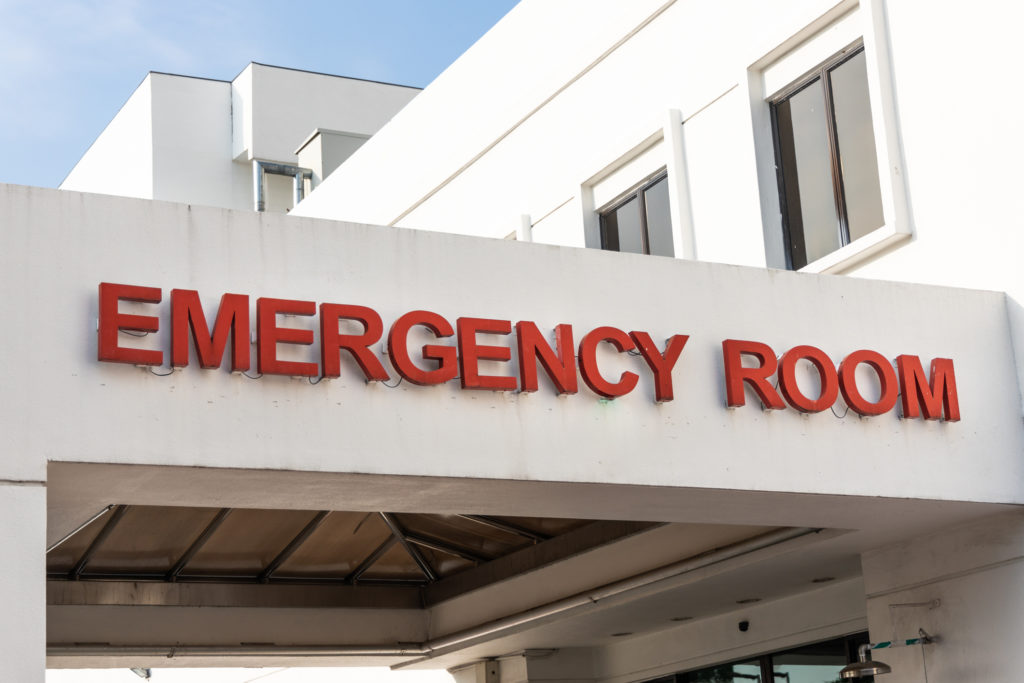When to take your child to the emergency room

When your child is sick or injured, you need to think carefully about where to take them for medical care. Is the Emergency Department the best option for your child’s situation? Here’s what you need to know to make the right decision.
EMERGENCY ROOM
We can’t stress this enough – the Emergency Department is the best place for crisis situations and severe illnesses or injuries that need immediate attention. Otherwise, consider taking your child to an urgent care or scheduling an appointment with your doctor in order to prevent unnecessary waiting in the Emergency Department.
Reasons to take your child to the Emergency Department include:
- Difficulty breathing or shortness of breath
- Severe allergic reaction (anaphylaxis) including hives, swelling, or difficulty breathing
- Serious injuries after a car accident
- Seizures
- Serious head trauma
- Coughing or vomiting blood
- Severe dehydration, especially in newborns/infants
- Broken bone, especially if poking through the skin
- Deep cut that does not stop bleeding after 15 minutes of pressure or may require stitches
- Serious burn
- Foreign object stuck deep in the ear canal or nasal passage
- Swallowing a foreign object like a button battery or detergent pod, both of which are toxic
- Rapid heartbeat that does not slow down
- Difficulty arousing
- Fever higher than 100.4 °F (Fahrenheit) in a newborn under 2 months of age
- Fever higher than 102°F (Fahrenheit) in an older child that is associated with any of the above symptoms or fever higher than 104°F (Fahrenheit) that is not responding to medication
Remember, call 911 for any of the following situations:
- Seizures lasting more than three minutes
- Swallowing of potentially poisonous chemical/product
- Inability to breathe or choking
- Neck or spinal injury
- Loss of consciousness
URGENT CARE
Urgent care is a good option if your CPCMG pediatrician’s office is closed. Medical professionals at urgent care centers can treat minor, non-life-threatening medical issues that may not require a visit to the emergency room but still need to be attended to quickly, such as:
- Fever in a child older than 2 months of age
- Severe sore throat or difficulty swallowing
- Vomiting and diarrhea that lasts for more than a few hours
- Rash, especially with a fever
- Severe ear pain, especially with a fever or drainage from the ear
- Sharp or persistent pains in their stomach or abdomen
- Blood in urine or stool
Remember, CPCMG offers evening and weekend appointments throughout San Diego and Riverside counties.
YOUR CPCMG PEDIATRICIAN
Visit your CPCMG pediatrician when there isn’t a medical emergency, and your child doesn’t need care right away. They’re also the place to go for sick visits – this includes:
- Colds and coughs that don’t get better in several days
- Allergies
- Earaches
- Fevers
- Headaches
- Gastrointestinal illnesses, such as vomiting and diarrhea
- Sore throat and other signs of strep throat, such as fever and red, swollen tonsils
- Minor burns or wounds
- Painful urination, which can be a sign of a urinary tract infection
- Rashes and mild skin infections
Not sure where to take your child?
CPCMG has a triage line to help you decide where to take your child for medical care. Call your pediatrician’s office and listen to the prompts to reach a nurse.
NOTE: If you or your child has been exposed to or diagnosed with COVID-19, it may be a good option to start with a telehealth visit to discuss your child’s symptoms and arrange for testing. However, if your child is experiencing any of the above signs that suggest a visit to the Emergency Department or Urgent Care, please inform the staff when you arrive and don’t forget, everyone should be wearing a mask.

